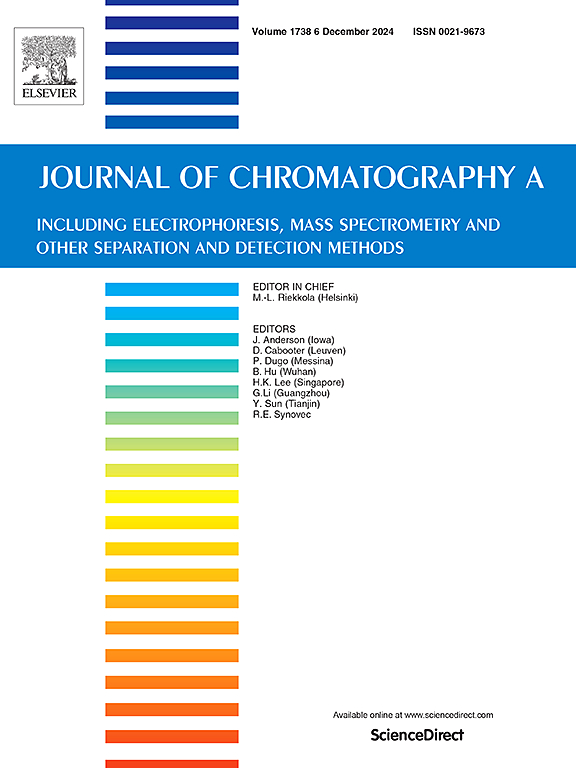Exploring electromembrane extraction coupled to fast LC-MS/MS as a high-throughput platform for determination of 12 polar endogenous metabolites in human plasma
IF 3.8
2区 化学
Q1 BIOCHEMICAL RESEARCH METHODS
引用次数: 0
Abstract
High efficiency in the analytical workflow, including fast sample preparation and LC-MS/MS analysis, is an advantage when analyzing a high number of samples. It can however be a challenge when determining polar analytes in complex, biological samples, and one must expect to make a compromise between a simple sample preparation followed by a long chromatographic separation, or vice versa, to limit matrix effects. In this proof-of-concept work, a one-step 96-well (parallel extraction) electromembrane extraction (EME) method was coupled to flow injection-MS/MS of 0.7 min per sample, allowing a very high-throughput analysis of 12 polar, endogenous metabolites from unprecipitated plasma of limited dilution. The throughput of the EME method matched the subsequent analysis. Recoveries ranged from 6 to 93 %, and repeatability and linearity were 2–15 % and R2 ≥ 0.9949, respectively, for all but two compounds. Matrix effects were approximately 50 % after EME and varied <11 % between 6 plasma donors, which represented a major improvement relative to a simple protein precipitation where signals were entirely suppressed. The work demonstrates a potential for EME coupled to flow injection-MS/MS to serve as a high-throughput platform for bioanalysis, not just of polar analytes, but also hydrophobic drugs both basic and acidic.
探索将电解质膜萃取与快速 LC-MS/MS 联用,作为测定人体血浆中 12 种极性内源性代谢物的高通量平台
分析工作流程的高效率,包括快速样品制备和 LC-MS/MS 分析,是分析大量样品时的一大优势。然而,在测定复杂生物样品中的极性分析物时,这可能是一个挑战,人们必须在简单的样品制备和长时间的色谱分离之间做出折衷,或者反之亦然,以限制基质效应。在这项概念验证工作中,将一步法 96 孔(平行萃取)电膜萃取(EME)方法与每个样品 0.7 分钟的流动进样-MS/MS 相结合,可以非常高通量地分析来自稀释度有限的未沉淀血浆中的 12 种极性内源性代谢物。EME 方法的通量与后续分析相匹配。除两种化合物外,所有化合物的回收率为 6% 至 93%,重复性和线性度分别为 2% 至 15%,R2 ≥ 0.9949。EME 后基质效应约为 50%,6 位血浆供体之间的基质效应差异为 11%,与信号完全被抑制的简单蛋白质沉淀相比,这是一项重大改进。这项工作证明了 EME 与流动注射-MS/MS 相结合作为生物分析高通量平台的潜力,不仅适用于极性分析物,也适用于碱性和酸性疏水性药物。
本文章由计算机程序翻译,如有差异,请以英文原文为准。
求助全文
约1分钟内获得全文
求助全文
来源期刊

Journal of Chromatography A
化学-分析化学
CiteScore
7.90
自引率
14.60%
发文量
742
审稿时长
45 days
期刊介绍:
The Journal of Chromatography A provides a forum for the publication of original research and critical reviews on all aspects of fundamental and applied separation science. The scope of the journal includes chromatography and related techniques, electromigration techniques (e.g. electrophoresis, electrochromatography), hyphenated and other multi-dimensional techniques, sample preparation, and detection methods such as mass spectrometry. Contributions consist mainly of research papers dealing with the theory of separation methods, instrumental developments and analytical and preparative applications of general interest.
 求助内容:
求助内容: 应助结果提醒方式:
应助结果提醒方式:


